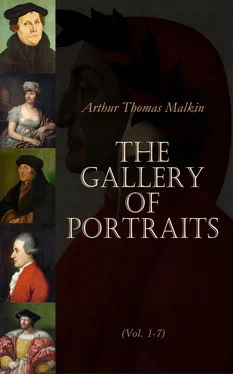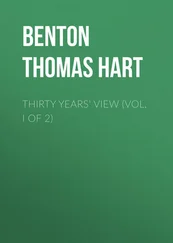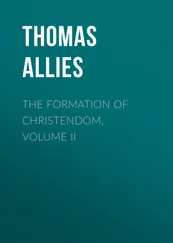The accounts of Michael Angelo’s early life relate so exclusively to his skill and practice as a sculptor, that some wonder may be felt as to the means by which he acquired the technical science and dexterity necessary to the painter. But it was in composition, and as a draughtsman that he excelled, not as a colourist; and the same intimate knowledge of the human figure, and freedom and boldness of hand, which guided his chisel, often, it is said, without a model, will account for the anatomical excellence and energy of his drawings. Nevertheless it is surprising to find him at this early age rivalling, and indeed by general suffrage excelling in his own art Leonardo da Vinci, not only the first painter of his generation, but one of the most accomplished persons of his age. The work to which we allude, the celebrated Cartoon of Pisa, painted as a companion to a battle-piece of Leonardo, has long disappeared; and is generally supposed to have been destroyed clandestinely by Baccio Bandinelli, a rival artist, of whose envious and cowardly temper some amusing anecdotes are related in Benvenuto Cellini’s autobiography. It represented a party of Florentine soldiers, disturbed, while bathing in the Arno, by a sudden call to arms. Only one copy of it is said to exist, which is preserved in Mr. Coke’s collection at Holkham.
When Julius II. ascended the papal chair, he invited Michael Angelo to Rome, and commissioned him to erect a splendid tomb. The original design, a sketch of which may be seen in Bottari’s edition of Vasari, was for an insulated building, thirty-four feet six inches by twenty-three feet, ornamented with forty statues, many of colossal size, and a vast number of bronze and marble columns, basso-relievos, and every species of architectural decoration of the richest sort. This commission, upon the due execution of which Michael Angelo set his heart, as a worthy opportunity of immortalizing his name, was destined to involve him in a long train of vexations. During the life of Julius, the attention which he wished to concentrate on this one great work was distracted by a variety of other employments forced on him by his patron. Upon his death, it was resolved to finish it on a smaller scale: but its progress was then more seriously interrupted by the eagerness of successive Popes to employ the great artist on works which should immortalize their own names as liberal patrons of the arts. Ultimately, after much dissatisfaction and dispute on the part of Pope Julius’s heirs, the form of the monument was altered; and as it now stands in the church of St. Pietro in Vinculis, it consists only of a façade, ornamented by seven statues, three of which are from the hand of Michael Angelo, the others are by inferior artists. The central figure is the celebrated Moses, by many considered the finest modern work of sculpture; and this is the only part of the original composition.
During the same pontificate, Michael Angelo painted the ceiling of the Sistine chapel. The employment was not to his taste; but it was forced upon him by Pope Julius. He had never tried his powers in fresco painting; and that branch of the art, as is well known, involves many difficulties, which, though merely mechanical, it requires some practice and experience to surmount. Having first completed the design in a series of cartoons, he sent to Florence to engage the ablest assistants to be found: but their labours were unsatisfactory, and dismissing them, he set to work himself, and executed the whole vault with his own hands, in the short space of twenty months.
Julius II. died in 1513. The next nine years, comprehending the pontificate of Leo X., are an entire blank in Michael Angelo’s life, so far as regards the practice of his art. He was employed the whole time, by the Pope’s express order, in superintending some new marble quarries in the mountains of Tuscany.
During the pontificate of Adrian VI. he resided at Florence, where Giuliano de Medici, afterwards Clement VII., employed him to build a new library and sacristy to the church of St. Lorenzo, and a sepulchral chapel, to serve as a mausoleum for the ducal family. He was also employed to execute two monuments in honour of Giuliano, the brother, and Lorenzo de Medici, the nephew, of Leo X. The princes are represented seated, in the Roman military habit, above two sarcophagi. Below are two recumbent figures to each monument, one pair representing Morning and Evening; the other, Day and Night. The reason for this singular choice of personages is not explained.
We cannot enter upon the maze of Italian politics, which led to the siege of Florence by the imperial troops in 1529–30. Michael Angelo’s well-known and varied talent led to his being appointed chief engineer and master of the ordnance to the city; in which capacity he gained new honour by his skill, resolution, and patriotism. During this turbulent time he began a picture of Leda, which was sent to France, and fell into the possession of Francis I. It has long been lost; the original cartoon is in the collection of the Royal Academy.
Michael Angelo’s second work in fresco, the Last Judgment, occupying the east end of the Sistine chapel, seems to have been begun in 1533 or 1534. It was not finished till 1541. His last and only other works of this kind were two large pictures in the Pauline chapel, representing the Martyrdom of St. Peter, and the Conversion of St. Paul. These were not completed till he had reached the advanced age of seventy-five.
In 1546 died Antonio da San Gallo, the third architect employed in the rebuilding of St. Peter’s. The project of renewing the metropolitan church of Rome was first suggested to the ambitious mind of Pope Julius II. by the impossibility of finding any place in the then existing cathedral, worthy of the splendid monument which he had ordered Michael Angelo to execute. Bramante, Raphael, and San Gallo, were successively appointed to conduct the mighty undertaking, and removed by death. San Gallo had deviated materially from the design of Bramante. Michael Angelo disapproved of his alterations; but was deterred from returning to the original plan by its vast extent, and the necessity of contracting the extent of the work so as to meet the impoverished state of the Papal treasury, produced by the spreading of the Reformation in Germany and England. He accordingly gave in the design from which the present building was erected, which, gigantic as it is, falls short of the dimensions of that which Julius proposed to raise. Having now reached the advanced age of seventy-one, it was with reluctance that he undertook so heavy a charge. It was, indeed, only by the absolute command of the Pope that he was induced to do so; and on the unusual condition that he should receive no salary, as he accepted the office purely from devotional feelings. He also made it a condition that he should be absolutely empowered to discharge any persons employed in the works, and to supply their places at his pleasure.
To the independent and upright feelings which led him to insist on this latter clause, the factious opposition, which harassed the remainder of his life, is partly to be ascribed. Disinterested himself, he suffered no peculation under his administration; and he was repaid by the hatred of a powerful party connected with those whose vanity his appointment wounded, or whose interests his honesty crossed. Repeated attempts were made to procure his removal, to which he would willingly have yielded, but for a due sense of the greatness of the work which he had undertaken, and reluctance to quit it, until too far advanced to be altered and spoiled by some inferior hand. This praiseworthy solicitude was not disappointed. During the life of Paul, and through four succeeding pontificates, he held the situation of chief architect; and before his death, in February, 1563–4, the cupola was raised, and the principal features of the building unalterably determined.
Читать дальше












